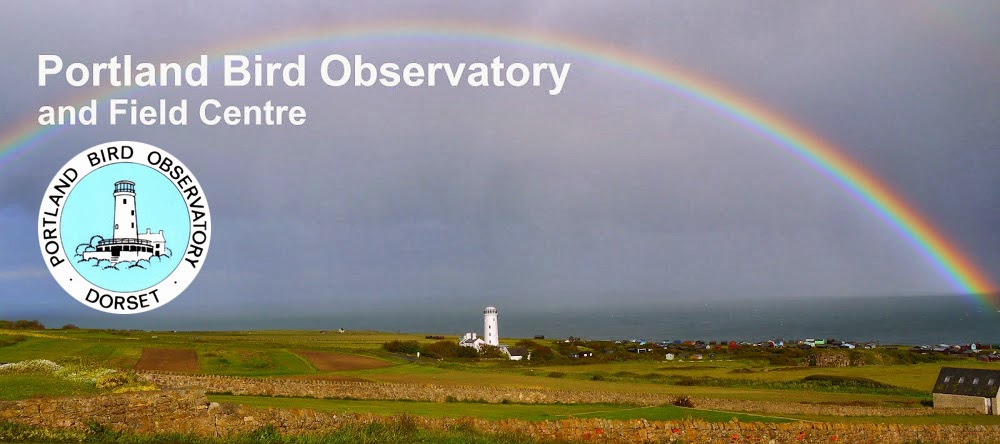Samey conditions - even those that were initially propitious, migrant-wise - eventually see numbers fizzle out as birds get the hang of what's going on and today's pleasantly quiet, semi-overcast conditions were a good deal less rewarding than they'd been in the last few days. Diurnal migrants featured strongly (no doubt their nocturnal counterparts had also been on the move in quantity but had the sense not to stop) with Swallows way up into four figures and House Martins surging through in by far their best numbers to date; Sand Martins and Swifts were well-represented and a lone Hobby also passed through. It was a different story on the ground where rewards were pretty scant: singles of Pied and Spotted Flycatchers at Wakeham, a Short-eared Owl and a Garden Warbler at Southwell and a Grasshopper Warbler at the Bill were about as good as it got amongst the low totals of regulars. The continuing offshore breeze did the seawatchers no favours, with 145 Kittiwakes, 36 Sandwich Terns, 33 Whimbrel, 18 Black-headed Gulls, 10 Bar-tailed Godwits, 2 Great Northern Divers and a lone Great Skua the best of the morning loggings at the Bill. Elsewhere, 24 Bar-tailed Godwits and a Whimbrel were at Ferrybridge.
Some of this morning's Bar-tailed Godwits at Ferrybridge © Pete Saunders:
They're so often seen on seawatches at this time of year that anyone would be forgiven for thinking that Bar-tailed Godwits are only diurnal migrants but big chunks of their prodigious migratory flights take place at night and we often get nocmig loggings of them in spring - here's a flock over the Obs before dawn a couple of nights ago:
It was a pleasant surprise when the first Pied Flycatcher trapped in the Obs garden this spring (last Saturday, 21st) was found to be already wearing a ring...
...and we've since heard back that it was ringed as a nestling last summer at Lake Vyrnwy in north Wales...
We're not sure why we'd blithely imagine that most of the Pied Flycatchers passing through Portland are coming and going from breeding sites in Wales but that's actually far from the truth since, although many do, there are also exchanges with Dartmoor, Exmoor, southwest Scotland, northern England and even Norway. The map below shows all of PBO's ringing exchanges for Pied Flycatcher (it's an interactive map so clicking on the points reveals the ringing details)...




